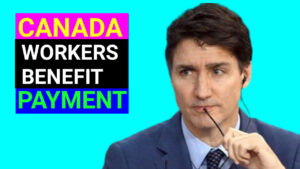Many low-income workers in Canada struggle to cover basic living expenses like rent, food, and transportation. To help ease their financial burden, the government offers the Canada Workers Benefit (CWB), a special support program. It gives extra money to workers who earn lower wages, helping them live a little more comfortably.
In 2025, the CWB continues to help single workers and families by giving them yearly payments based on their income. Single workers can receive up to $1,518, while families may get up to $2,616. The amount you get depends on how much you earn, and it decreases as your income goes up.
This article explains who can get the CWB in 2025, how much you could receive, when payments are made, how to apply, and extra benefits for people with disabilities. It also covers how the program differs across Canadian provinces and territories. Let’s dive into all the important details you need to know!
Who is Eligible for Canada Workers Benefit 2025?

To receive the CWB, you must meet certain age, residency, and income rules set by the government. The program is designed to help workers who really need financial support.
Basic Requirements
- You must be at least 19 years old by December 31, 2025. (Younger workers can qualify if they live with a spouse, common-law partner, or have a child.)
- You must be a resident of Canada for the whole year.
- You must earn money from a job or from being self-employed.
Income Limits for 2025
The amount you receive depends on how much money you make: | Category | Maximum Benefit | Full Amount Up To | Starts Reducing After | |:—|:—|:—|:—| | Single Workers | $1,518 | $24,975 | $33,015 | | Families | $2,616 | $43,212 | $56,197 |
If your income is higher than the limit, the benefit is reduced or completely stops.
Who Cannot Apply?
Some people are not allowed to receive the CWB:
- Full-time students (without dependents) who attended school for more than 13 weeks in 2025.
- Individuals who were in prison for 90 days or more during the year.
- People who are not Canadian residents for the entire year.
- Those who do not file an income tax return.
How and When Will the CWB Payments Be Made?
The Canada Revenue Agency (CRA) gives the CWB in parts through the year to help people manage their expenses better. These are called advance payments.
If you applied for advance payments, you will get money on these dates. After you file your taxes for 2025, any balance you are still owed will be paid to you.
Important:
- If you do not ask for advance payments, you will get the full amount in one payment after filing your 2025 tax return.
Easy Steps to Apply for the Canada Workers Benefit 2025
Applying for the CWB is simple. You just need to file your taxes properly and include the right form.
How to Apply:
- File your 2025 income tax return before the deadline.
- Complete Schedule 6 on your tax return to claim the CWB.
- Submit your return online or by mail to the CRA.
- Wait for CRA to review your return and send your payment.
Note:
If you received CWB in 2024, you will be automatically considered for 2025 advance payments. New applicants will need to file their taxes first to receive the benefit.
Extra Help: CWB Disability Supplement 2025
The CWB also offers extra financial help for workers with disabilities. This is called the Disability Supplement.
Details of the Disability Supplement
- Maximum payment: $784 per year.
- You must qualify for the Disability Tax Credit (DTC) to get it.
- The supplement amount reduces as your income rises, similar to the basic CWB.
This extra support helps workers with disabilities manage higher living and healthcare costs.
Differences in CWB Across Provinces and Territories
Although the CWB is a federal program, there are some differences depending on where you live in Canada. Provinces and territories may adjust income limits and offer extra benefits based on the cost of living in their area.
Some places might have higher income thresholds or provide additional credits to low-income workers. It’s a good idea to check with your provincial tax office or the CRA to see if there are extra benefits you can receive.